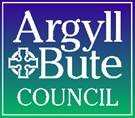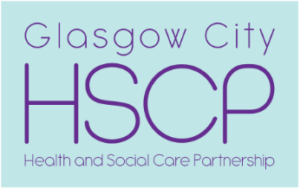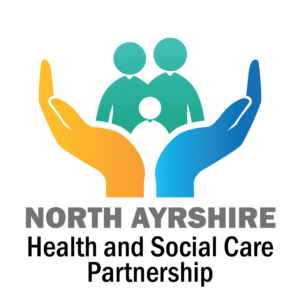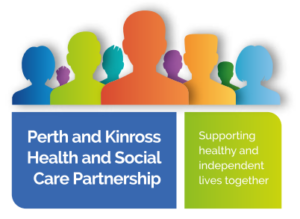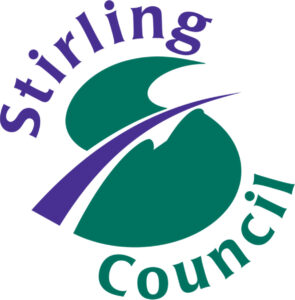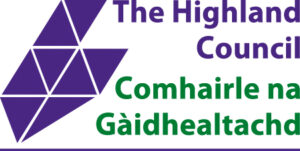Briefing to Support Oral Evidence Session – 1st December 2021
Introduction and Context
Social Work Scotland is the national professional leadership body for the social work and social care professions in Scotland. We are led by our members, and work to influence policy and legislation and to support the development of the social work and social care workforce. Alongside organisational support Social Work Scotland run a number of national projects around design and implementation of policy and legislation.
Social work is defined as ‘a practice-based profession and an academic discipline that promotes social change and development, social cohesion, and the empowerment and liberation of people. Principles of social justice, human rights, collective responsibility and respect for diversities are central to social work. Underpinned by theories of social work, social sciences, humanities and indigenous knowledge, social work engages people and structures to address life challenges and enhance wellbeing. The above definition may be amplified at national and/or regional levels.’ (Global definition of social work, International Federation of Social Workers, 2014)
As an organisation, we welcome the opportunity to engage with the work of the Education, Children and Young People Committee in relation to the impact of covid on our children. Along with many other professions, social work has lived through the most difficult period in the history of the profession. Our support and protection for the most vulnerable in society, and drive to enable and empower children and families has been restricted and challenged. We seek to reflect in this briefing emerging themes, information and areas relating to care experienced and other disadvantaged groups with whom the social work profession is most engaged. We caveat this by noting that we remain in the midst of the covid -19 pandemic, and as such, research on the impact on children and specifically those with whom we work, is as yet minimal – it remains too early to know the medium or long-term impact on children’s health wellbeing and development. Full understanding and appreciation of what this period has meant for children and young people and their families is likely only to become clear over time.
What we do know is that this has been a lengthy and traumatic period of national and worldwide insecurity. Learning from knowledge of trauma in young people and the impact of disruption in the lives of children, for example where alternative permanent care is necessary, or child protection measures have been taken, suggests that insecurity and uncertainty can influence on a lifelong basis. The Scottish GIRFEC framework provides a time-tested model within which to manage and monitor children’s wellbeing and resilience, and the impact of trauma as we move out of the crisis phase of the pandemic.
The pandemic has brought with it additional stressors for many families. These range from concerns about health and additional experiences of loss to pressures resulting from caring responsibilities, competing demands and loss of support networks and social outlets. For many children and families with whom social work engage, these stressors exacerbate existing challenges, whether that be social isolation, poor socio-economic support structures or disrupted relationships. Some children entered the pandemic period having already experienced adversity. Examples are children living with domestic violence where the safety and protection of school and other social outlets was lost; children with complex needs whose support networks reduced or ceased; children in poverty where the pandemic further reduced their access to basic provision and income; care leavers whose limited networks were removed thus increasing social isolation. This underlines that a likely impact of the pandemic for some children is an increase in adverse factors and that while many services have resumed, to mitigate the effects of the pandemic will require proactive investment across many facets of society and an ongoing attention to wellbeing over time.
All areas of society including the social work and care workforces have been affected, and therefore many of the above challenges and stressors above are true for elements of staff and care settings that support children. With only critical services able to be provided, ability to respond to need, progress children’s plans and manage the basic issues such as family contact for care-experienced children were severely limited. There have been specific pressures and challenges for informal and formal carers and establishments, many of which remain in the current period. Any crisis requires resilience to face and manage the situation in a manner that allows an individual or group to exit that crisis without significant damage. As we move forward, resource, capacity, and care for the workforce to facilitate healing and mitigate current and future issues is critical.
The information in this briefing is gathered from research, national data, practice information, Chief Social Work Officer reports, and material and data from local areas, groups and our members.
Research Evidence
While a comprehensive research basis will only develop over time, there are some early pieces of research which highlight the impact of the pandemic on vulnerable groups in society, and also reflect the information coming from practitioners members. We highlight a few below.
CELCIS: The impact of COVID-19 on children and families in Scotland: Understanding needs and services through local social work data July 2021
This report considers data provided over the period of the pandemic to assist understanding of the impact of the pandemic on Scotland’s most vulnerable children and young people. The work notes:
Child Protection
- An increase in demand such as child protection referrals and IRD’s noting that this is not translated in to an increase in child protection registration and related activity. Referrals were received from police, rather than the previous main referrer of education
- Overall number of children becoming looked after children reduced
- The number of referrals to the Children’s Reporter fell significantly across 2020, especially in the first six months of the pandemic when compared with the prior year. There was a small proportional increase in referrals due to a lack of parental care and a small proportional decrease in referrals due to close connection with a person who has carried out domestic abuse. Referrals from social work increased (15%), while referrals from education decreased (5%)
Mental health
- A reduction in children’s wellbeing and mental health, seen in relation to sleep patterns, eating, concentration in younger children and an increase in anxiety and worry in older young people
Care experienced young people
- A reduction in the support available and increase in mental health issues
- A February 2021 Who Cares? Scotland membership survey found that 77% of care-experienced respondents reported that they had received less support from professionals (including teachers/lecturers, social workers, doctors) during the pandemic. They described feelings of worry, anxiety, vulnerability, depression and being tired, and over 50% considered their mental health to be worse than before the pandemic.
- An increase in deaths amongst care leavers from 12 in 2019 and 15 in 2020.
- Specific groups identified as in need were young people and families with disabilities who experienced isolation, increased family poverty and inequality, challenges maintaining connection and support for Eastern European communities and more fractured and fragmented transition for care leavers.
Hidden Harm
A significant concern for practitioners in social work is the lack of visibility of children during the pandemic. The report notes this, and that, while critical services continued and the most vulnerable children were prioritised, the reduction in contact with children ie a lack of visibility, meant issues could not always be picked up. This included impact on children’s development as well as areas such as domestic abuse, isolation of new parents, or family stress. For some groups such as young carers, those subject to sexual exploitation and those impacted by bereavement, the hidden nature of their role was exacerbated
The report notes specific areas where challenges arose, including children in need, those in kinship care and families where isolation, housing and financial issues, and lack of supports were factors.
CELCIS conclude by summarising likely results for children and noting that demand will almost certainly increase, and be characterised by an upturn in demand and referrals for children’s services as restrictions ease, schools return, face-to-face visits by professionals increase, interactions between households increase and neglect and family poverty becomes more visible. They highlight that
- Concerns are likely be similar to those impacting on children and young people during the pandemic – mental health (including self-harm and eating disorders), parental mental health, domestic abuse, and problematic parental alcohol and substance use.
- Demand for services is likely to endure for many months, even years, to come.
This underlines the need to monitor closely unknown or unmet needs in children and young people where those needs could increase and escalate, including unborn children, and the importance of services being alert to changes in family situations and swiftly sharing information with partners. They highlight that ‘Care experienced young people may be particularly disadvantaged as many will be less able to draw on family support for housing, money and employment and training opportunities’.
CELCIS encourage attention being given to new families whose needs may endure and escalate over time noting in particular the small upturn in child protection activity for unborn children. Local areas who took part in the research considered that development of services over the pandemic period means they are in a better position to respond to future increases in demand. Specifically, more regular analysis of the data to identify and respond to emerging trends and patterns; increased collaboration between multi-agency partners, and the funding and introduction of additional specialist roles to respond to increasing areas of concerns. Some local areas noted that current budgetary pressures will impact on ability to provide preventative supports for the children and families as will recruitment and retention challenges particularly in more rural areas.
Institute for Research in Social Services Social (IRISS) & Social Work Scotland
Social Work Leadership through COVID-19 December 2020
IRISS published their research on social work leadership through the pandemic in December 2020, as the country entered the second wave of the pandemic. The work outlines the statutory leadership role of the Chief Social Work Officer within social work noting the complexities and cross cutting nature of social work service delivery, which spans areas such as public protection, corporate parenting and many national initiatives.
The report focuses on leadership and the role of social work and is therefore not specifically considering the impact of the pandemic on children. However, it contains useful context and insight into emerging challenges, approaches, and cross cutting issues, many of which have influenced the position of children and their families, and moves on to highlight potential impacts beginning to emerge. These include:
- Rising occurrences of domestic abuse, and its impact on children, young people, adults and families and the human and financial costs of this which demands a coordinated strategic and partnership response.
- A possible rise in demand for social work services as there is a resumption of wider services (e.g. courts and children’s hearings) and as a result of poverty, stress and increased vulnerability
- The wider impact of adult mental health issues and growth in referrals.
- The cumulative impact of carer and family stress – this can be a result of limited or reduced availability of services, or from an increase in family and carers stepping in to care for loved ones
- The widening social and health inequalities exacerbated by the pandemic and the cumulative reduced capacity to cope with adversity
- Financial cost of responding to the pandemic and impact on decisions about budgets for vulnerable people’s services.
- Implementation of The Promise and learning from the Independent Review of Adult Social Care Review – will not be achievable without further investment in preventive services to release the costs of crisis services
The report concludes by noting that the pandemic has escalated already known challenges with ‘those who are most vulnerable being the ones most disproportionately impacted.’
Young People Led Survey
A group of care experienced young people undertook a piece of work on the impact of Covid-19 on the mental health and wellbeing of looked after children and care leavers in their area. This will be published on 17th December. The young people agreed that their findings could be included in this briefing in advance of the launch date to assist the work of the Committee. Findings include:
- 55% felt that the pandemic had a negative effect on their mental health and wellbeing. This linked to professional help not being available and being left on their own to manage issues, financial pressures and isolation from lack of face-to-face interaction.
- Many detailed mental health issues such as not sleeping
- 29% reported being diagnosed at some point with a mental health issues, and almost 50% had used a mental health service. However, less than 50% found this useful
- Barriers to accessing mental health services were mainly practical, with waiting times being highlighted and the short time then given to an appointment resulting in the contact not always feeling worthwhile. This was alongside feeling that not all professionals understood, that other people’s problems were seen as more important, and that the transition from child to adult mental health services was not smooth
- There is not enough support available
On the positive side, a large proportion (over 70% of respondents) indicated that someone had spoken to them about their mental health, and many rated specific services positively. Factors that rated a service positively included the environment in which support or treatment is received, and a friendly and understanding approach by staff/workers. This approach by staff created a positive environment where young people feel comfortable sharing their experiences, whilst also assured that they would receive professional and expert help.
Recommendations for improvement include:
- ensuring that support is readily accessible, empathetic, and consistent
- better training for staff s which could involve getting young people involved in designing training
- Constantly reminding young people that support is available
Poverty
While research on poverty is not specifically about the impact of the pandemic on children in need, the increasing context of poverty tends to be seen more in vulnerable groups. (Reference Scottish Government, Every Child Every Chance: Tackling Child Poverty Delivery Plan 2018-2022) As such, we reference analysis in this area to highlight this context, which affects health, development and need in children, and highlight below one example from Glasgow which provides stark statistics. Reference is also directed to Public Health Scotland work undertaken with Inverclyde Council and published in September 2021 around a data and systems approach to prioritising poverty that includes lived examples
- Since the start of the pandemic the number of children in Glasgow living in relative poverty has risen from 25,485 to 27,995, a 10% increase
- The depth of that poverty has increased as well. On average families with children in relative poverty are now £115 per week below the poverty line or £8 per week worse off than before the pandemic.
- The COVID-19 pandemic has seen a drastic increase in the number of families with children that are receiving Universal Credit in Glasgow, rising from 10,154 to 15,140 or almost a 50% increase. 92% of children that are living in households receiving both Universal Credit and Council Tax Reduction are living in relative poverty
- An additional 1,650 children from lone parent households are identified as living in poverty
- The effectiveness of the Scottish Child Payment during the pandemic has decreased due to families moving deeper into poverty however. The increase in the payment to £20 week and the further roll out in late 2022 will impact positively.
Key Reflections
Social Work Scotland member information confirms much of the detail outlined above. We would highlight specific supporting detail from members and local areas:
Increased demand:
There is a significant increase in demand for services being evident across the country. This is reflected in child protection referrals, level and complexity of need and expectations of both other professionals and families. Figures provided by one local authority show an almost 50% increase in cases compared to 2020. As Scotland has opened up and particularly as schools re-opened and more children’s health services returned to face-to-face contact the effects of the pandemic have become clearer.
Related to this, many looked after children were ’stuck’ during the pandemic, with plans for moves to permanent placements or rehabilitation home unable to be progressed, due to either restrictions on movement, court and Children’s Hearing closures/restrictions and restricted ability to undertake family finding in a global pandemic environment. This has created ongoing delays as courts struggle to prioritise civil cases, and social workers struggle with demand for updated assessments whilst also dealing with new situations.
There are particular pressures and service demands for families of children with disabilities referenced below.
Alternative Family Based Care:
While the emergency legislation assisted some aspects of fostering and kinship situations, the pressures on family based alternative care have been highlighted by many member’s, local authorities and third sector partners. This includes all the pressures of lockdown on with limited supports, managing complex contact arrangements which often included risk to themselves and their families, and a lack of short break/respite provision. Carers were also often dealing with issues such as a need to shield due to their own, a family member of cared for child’s health, providing a teaching environment for a range of children and needs, and managing a wide range of behaviours.
Number of available placements in some areas fell over the pandemic due to factors such as self-isolation and shielding, and accessing placements was complex. Carers were often asked to take children in emergencies without knowledge of their Covid status.
Despite the above restrictions, many carers noted that for some children removal of the pressures of managing school resulted in a reducing in stress and anxiety and an increase in engagement with learning via remote routes. For those children, time in the security of a closed and nurturing environment was a positive factor. For other young people this was not the case and some placements disrupted due to the risks resulting from young people ignoring the Covid rules.
The increase in number of children being accommodated reported by some areas coincides with what may be a national crisis in relation to foster carer recruitment at a time when this service is most needed to meet the challenges of the post covid period and to meet the commitments of the Promise. This includes the new duties in relation to placement or brothers and sisters. Fostering Network have maintained regular contact with their member and provide on their website details of the pressures experienced by foster carers, how they are dealing with these and the recruitment position. Both local authority and third sector providers are detailing a lack of response to recruitment and loss of existing cares due to factors such as age and the impact of the pandemic.
There were particular pressure for kinship situations, and while foster carers noted that support from link workers was regular and helpful, few kinship carers have the benefit of a dedicated supervising worker, being supported instead by the looked after child’s worker. As those staff were largely engaged in the crisis response to the pandemic, kinship carers have reported feeling isolated and not as well supported. Kinship carers also reported feeling least comfortable or able to engage with remote support groups.
Residential Care:
Residential services managed well during the pandemic, with many reducing capacity to better care for existing young people in placement. Digital technology and support for contact was provided, and processes put in place where individuals tested positive. Children’s house are usually catering for teenager and the anticipated range of dynamics this provides were experienced, but largely managed. The challenges faced by adult care homes have not been reported for children where the approach was to consider the children’s house in a similar way to any other family home.
Digital Technology:
The use of digital technology which has developed from the pandemic has been largely positive. Additional funding to ensure that vulnerable children and families had access to suitable devices was utilised and made a difference. Understanding of the need to provide data along with devices was a point of learning. There are examples of seven day a week programmes of touching base, exercise and groups taking place to support care leavers and Champions Board young people as well as creative use of technology to ensure that young people in care could keep in touch with family and friends.
Alongside this, as the pandemic progressed technology was utilised to take child protection and child care reviews onto Teams or related platforms. This enabled multi-agency reviews to continue and ensure proper planning. It is however not without challenges and in particular how to ensure that families and young people are able to engage and are supported to do so. This is crucial where difficult material is being considered, and a family may be accessing a meeting from their own home. Many local authorities mitigated this impact by ensuring that families took part alongside social workers or a key professional, with time for de-brief and discussing after the meeting
For young people, they reported feeling comfortable with remote meetings, and some appreciated the opportunity to join for a period then leave and a lessening of the pressure of sitting in a large room with many people.
While not taking the place of face-to-face meetings this aspect of change is likely to be integrated in to recovery and beyond, allowing flexibility, and better use of time and engagement.
Poverty
For those already living in poverty, which includes many families in need, care leavers and families with disabilities, the pandemic has increased the pressure of living in poverty. Alongside other areas where this impacts, poverty can affect children’s health and development welling and achievement. Despite significant funding to close the attainment gap, it is likely that the pandemic has mitigated any progress, and in fact increased that gap.
Care Experienced Young People
Members have highlighted specific impact on care experience young people. This include isolation from family and friends and the consequences of this, delayed progression of plans which has particularly affected children returning home or moving to permanent alternative placements, and challenges in completing assessments of families when access was restricted
Several areas have reported an increase in mental health and emotional wellbeing issues. For care leavers living on their own this was particularly noted and includes an increase in self-harm and suicide, and suicide ideation.
Young People with Disabilities:
The pandemic has had a very particular impact on young people with a disability and their families, underlining the often un-acknowledged pressures these families manage in their normal day-to-day lives.
Many essential support services such as short breaks closed when the first lock down occurred, and the restrictions in relation to health meant that even once able to open, the services were restricted. Alongside this, some families were shielding and opted, for the safety of their children, not to accept home support. This placed the full burden of day-to-day care for some extremely complex children on their families without the normal breaks provided by services or school. While manageable for a short period, the unexpected lengthy period of the pandemic- before vaccination and an opening of service, – meant that many families were and remain exhausted. While school hubs were available, attendance was not an option for many children, and means to engage remotely were more limited.
The wider crisis in social care is also influencing the position of children with a disability. Only a small number of home care providers are registered to provide care to children with complex needs, and thus the lack of current staffing in this sector is increasing pressure on families already in crisis. The failure to include children’s social care provisions and PA’s in the recent salary increase for adult providers may further reduce availability.
One local authority has provided details which shows an increase this year of 67% in residential placements, all children with a disability with lack of community supports being a significant contributory factor. Many local authorities developed creative ways of providing what support they could and utilised summer funding to improve social experience, but the effects on this group of young people and their families is likely to continue, and to be as impacted by carer supports and exhaustion as by resources and support directly for children.
Mental Health
Regardless of the area of social work or children’s services, threaded through every pieces of research and feedback is that the Covid-19 pandemic has increased negatively mental health and wellbeing of children and young people and that those already vulnerable groups are again most affected. To improve coordinated and cohesive attention must be paid to this area which impacts on every other aspect of children’s lives. Children cannot engage, attain, grow and develop in a positive manner and build their resilience when dealing with an environment which negatively impact on their wellbeing.
Workforce:
Members have provided information on a range of workforce issues. This highlights that social work children and families staff have operated under immense pressure over the period of the pandemic with reduced staff, critical services only operating, and with the added pressure of new legislation.
Conclusion
Evidence for the impact of the Covid-19 pandemic is continually increasing. Social Work Scotland is conscious that the information informing this briefing is largely gathered from local data, member details and practice examples. As recovery progresses that evidence base will be enhanced with threads and priorities emerging. Children, however, are not able to wait, and existing material has already provided indications of where the priorities for action lie.
- The impact on children is likely to long term and continually emerging and demand for services has and will continue to increase
- The pandemic has increased vulnerability factors for children and families already experiencing adversity and trauma
- Mental health impact permeates all the feedback and research and is a core area for action.
- There has been a particular impact on children with disabilities, care experienced young people and the resources that support those groups.
- Wider societal factors such as poverty are critical factors
- Workforce issues need to be addressed to enable appropriate response to need
In conclusion, the impact of the Covid-19 pandemic continues to develop and is significant for children and particularly those who had existing adversities in their lives before the pandemic. Mitigating the impact on children will require more than a resumption of services but active recovery and support to build anew structures and supports that will enable children’s recovery and wellbeing, encourage creative approaches and utilise learning from the pandemic. Working together, paying attention to early intervention and staff wellbeing, and listening to the voice of young people and families are essential.



